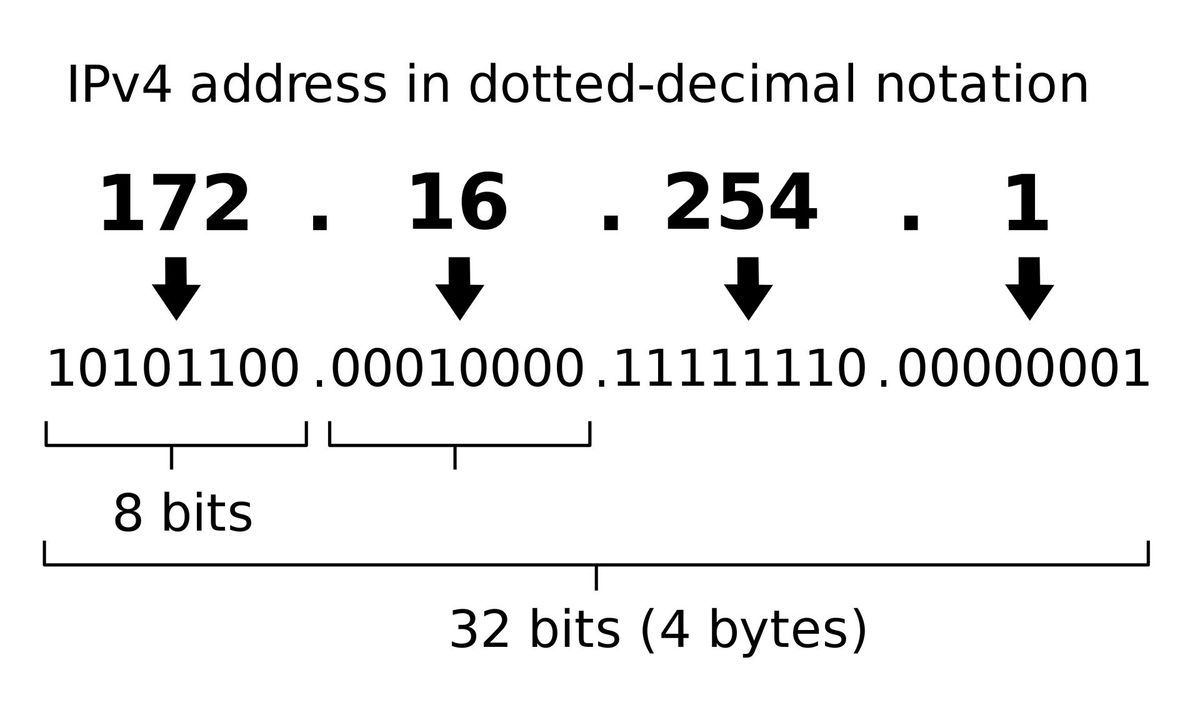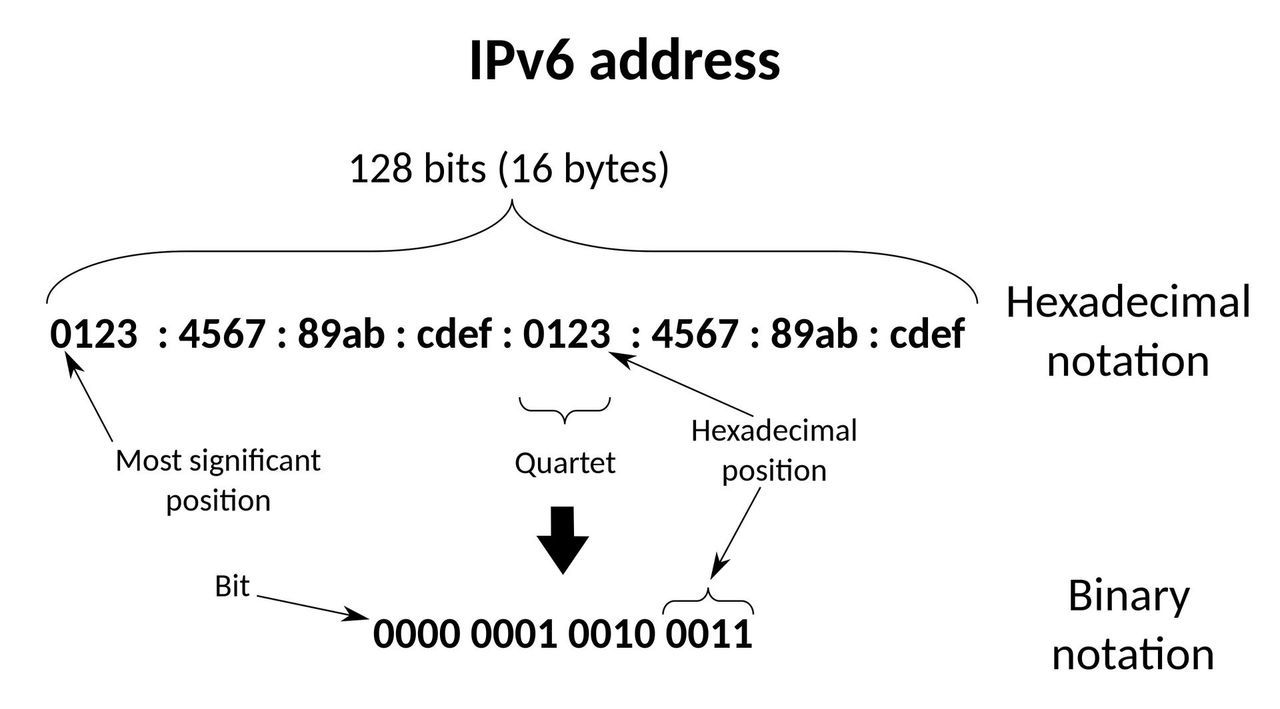IPv4 vs. IPv6: What is the Difference?
TLDR: key takeaways
- IPv4 and IPv6 are two versions of Internet Protocol used for identifying devices and routing traffic on the internet.
- IPv6 was developed to address the limitations of IPv4, particularly the shortage of unique IP addresses.
- Transitioning from IPv4 to IPv6 is a gradual process due to compatibility issues, but using dual stack allows running both in parallel.
Understanding Internet Protocol (IP) Addresses
Internet Protocol (IP) addresses are unique numerical identifiers assigned to every device connected to the internet. Just like a home address allows sending mail to a specific residence, an IP address enables data to be routed to the correct device. IP addresses serve two primary purposes:
- Identifying devices on the internet
- Enabling devices to communicate and exchange data
There are two main versions of IP addresses in use today: IPv4 and IPv6. Let's take a closer look at each.
IPv4: The Original Internet Addressing System

IPv4, or Internet Protocol version 4, was developed in the early 1980s and is still the most widely used addressing system. It uses a 32-bit scheme, allowing for approximately 4.3 billion unique addresses. A typical IPv4 address looks like this: 192.168.1.1
Despite the large number of possible IPv4 addresses, the rapid growth of internet-connected devices led to concerns about address exhaustion. Key facts about the IPv4 address space:
- In 2011, the global Internet Assigned Numbers Authority (IANA) allocated the last blocks of available IPv4 addresses
- By 2015, the American Registry for Internet Numbers (ARIN) announced the exhaustion of IPv4 addresses in the United States
- Over 90% of internet traffic still uses IPv4 as of 2023
To mitigate IPv4 address shortages, techniques like Network Address Translation (NAT) are used, allowing multiple devices to share a single public IP address. However, NAT introduces complexity and can impact performance for certain applications.
IPv6: The Next Generation of Internet Addressing

Recognizing the limitations of IPv4, the Internet Engineering Task Force (IETF) developed IPv6 in the late 1990s. IPv6 uses a 128-bit addressing scheme, providing an astronomical number of unique addresses - approximately 340 undecillion (3.4 × 10^38).
An IPv6 address is represented as eight groups of four hexadecimal digits, separated by colons. Here's an example: 2001:0db8:85a3:0000:0000:8a2e:0370:7334
In addition to a vastly expanded address space, IPv6 offers several advantages over IPv4:
- Mandatory IPSec support: IPv6 includes built-in security features, such as encryption and authentication, making it more difficult for attackers to intercept data.
- Simplified header structure: IPv6 has a more efficient header design, reducing processing overhead and enabling faster routing.
- Better multicast support: IPv6 includes improved multicast addressing, benefiting applications like video conferencing and online gaming.
Despite these advantages, the transition from IPv4 to IPv6 has been slow due to backwards compatibility challenges and the cost of upgrading network infrastructure.
Key Differences Between IPv4 and IPv6
| Address Size | 32-bit (4 bytes) | 128-bit (16 bytes) |
| Address Format | Dotted decimal notation (e.g., 192.168.1.1) | Hexadecimal notation (e.g., 2001:0db8:85a3:0000:0000:8a2e:0370:7334) |
| Number of Possible Addresses | ~4.3 billion | ~340 undecillion |
| Header Size | 20-60 bytes | 40 bytes |
| Security | Optional IPSec support | Mandatory IPSec support |
| Quality of Service (QoS) | Uses Type of Service (ToS) field | Replaced with Traffic Class and Flow Label fields |
| Fragmentation | Allowed by routers and sending hosts | Only allowed by sending hosts |
| Checksum | Header checksum present | No header checksum |
Transitioning from IPv4 to IPv6
Moving from IPv4 to IPv6 is a gradual process due to the vast number of devices and systems that need to be updated. Several strategies are used to facilitate the transition:
- Dual Stack: Devices run both IPv4 and IPv6 in parallel, allowing communication with both types of networks.
- Tunneling: IPv6 packets are encapsulated inside IPv4 packets, enabling transport across IPv4 infrastructure.
- Translation: Network Address Translation 64 (NAT64) allows IPv6-only devices to communicate with IPv4 devices through protocol translation.
To use IPv6, several components need to be IPv6-compatible:
- Operating Systems: Most modern operating systems, including Windows, macOS, and Linux, support IPv6.
- Routers: Not all routers support IPv6. Check your router's specifications to determine IPv6 compatibility.
- Internet Service Providers (ISPs): ISPs must provide IPv6 connectivity. Check with your ISP to verify IPv6 support.
Adopting IPv6 is essential for the long-term growth and stability of the internet. Using high-quality IPv6 proxies can help ensure reliable connectivity and smooth access to IPv6 resources during the transition period.
Ready to try?
Frequently Asked Questions (FAQ)
Will IPv6 replace IPv4?
Eventually, yes. As more devices connect to the internet and the pool of available IPv4 addresses diminishes, the transition to IPv6 will become increasingly necessary. However, the process will be gradual, and IPv4 will likely coexist with IPv6 for many years.
Is IPv6 faster than IPv4?
IPv6 has the potential to be faster than IPv4 due to its simplified header structure and more efficient routing. However, real-world performance depends on various factors, such as network infrastructure, hardware, and software optimization.
Can IPv4 devices communicate with IPv6 devices?
Not directly. IPv4 and IPv6 are not interoperable, meaning devices using different protocols cannot communicate without translation mechanisms like NAT64 or proxy servers.
Conclusion
The transition from IPv4 to IPv6 is a significant milestone in the evolution of the internet. While IPv4 has served us well for decades, its limitations have become increasingly apparent. IPv6 offers a vast address space, improved security, and enhanced performance, making it the protocol of choice for the future.
As the world continues to embrace IPv6, it's crucial for businesses and individuals to understand the differences between IPv4 and IPv6 and to prepare for the transition. By adopting IPv6-compatible devices, systems, and IPv6 proxies, we can ensure a smooth and secure internet experience for years to come.